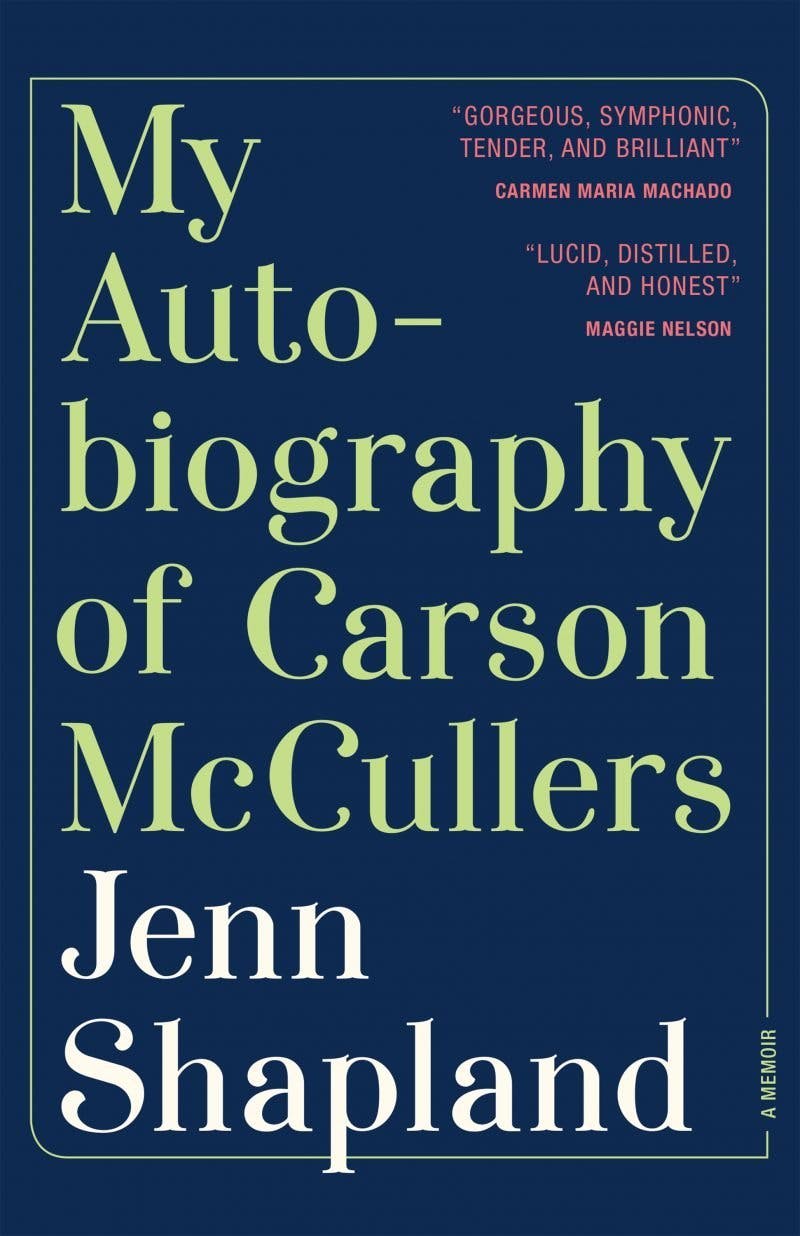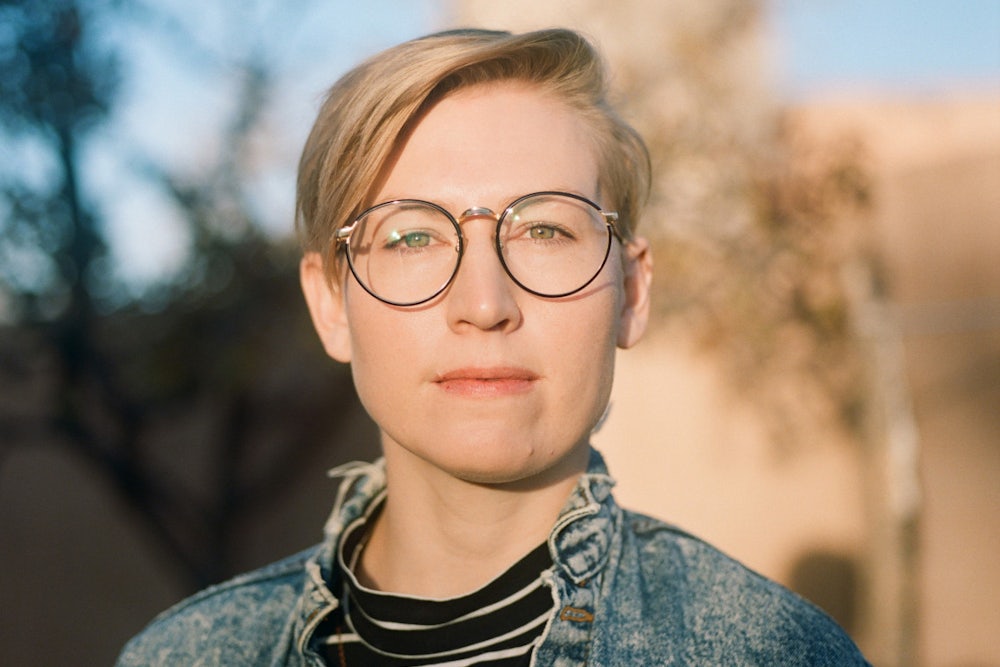“I have read enough biographies,” Jenn Shapland writes early in her new book, “to know, in no uncertain terms, that they are built of artifice and lies. I am not a fiction writer, and this is not a biography.”
I take her point that biography is a subjective enterprise, though I wonder about the hyperbole. The book’s title—My Autobiography of Carson McCullers—has already told us that this is actually a memoir, with the writer using McCullers’s life to comprehend her own. It’s a familiar device—like Helen Macdonald’s hawk or Julie Powell’s Julia Child. Near the book’s end, Shapland reminds us, “Biography and its presumptions have bothered me for some time.” This is so insistent that it prompts the question: Does Shapland really intend to litigate the problems inherent in biography as literary pursuit, or is she excusing the endeavor of her own book?

As a graduate student, Shapland was an intern at the Harry Ransom Center, the University of Texas repository that buys up the ephemera of seemingly every writer: Gabriel García Márquez, Don DeLillo, Rachel Cusk. An academic’s request introduced Shapland to the correspondence between a woman named Annemarie Clarac-Schwarzenbach and Carson McCullers, perhaps most famous for her 1940 novel The Heart Is a Lonely Hunter, surely one of American literature’s most remarkable debuts. Shapland’s interest is piqued:
Annemarie’s language in her letters to Carson is intimate, suggestive, or I read it that way. You remember. I had received letters like these. I had written letters like these to the women I’d loved. It was very little to go on, and yet I felt an utter certainty: Carson McCullers had loved women.
This suggestion that a writer firmly within the American canon—albeit one whom she’d not read—might have loved women strikes a nerve. “I am as hesitant to ascribe steady narrative meaning to my own life as to any other’s,” Shapland writes. “But I suppose we could call those letters a turning point.” She’s moved to catalog the writer’s effects, which have been waiting for a scholar’s attention for years; she cuts her hair short and embraces the label lesbian; she abandons her hunt for an academic job to write the book we’re reading. Whatever transpired between Annemarie and Carson might be open to a biographer’s interpretation; what happens between Jenn and Carson seems clearly like love.
If McCullers provided salvation, helping Shapland emerge once and for all from the closet, now the younger writer has an opportunity to return the favor. But she is wary. She cites this, from Josyane Savigneau’s 2001 McCullers biography: “The labels lesbian and bisexual ... have also been used by partisans of homosexuality—both male and female—who would appropriate the writer for their cause.” Shapland writes, “Her description positions me as a ‘partisan of homosexuality’ seeking to ‘appropriate’ Carson’s story for my ‘cause.’ And perhaps I am.”
This circumspection is unnecessary and dulls the work’s effect. Authorial hesitation is fine—probably commendable!—but its recurrence feels less like an intellectual complication and more like nervous tic. To be queer—different in whatever fashion you are—is superb preparation for the task of criticism. You meet Harriet the Spy with that frisson of recognition. You read A Separate Peace waiting for the teen protagonists to kiss (fraternal love, give me a break). This is a survival strategy (You are not alone in the world) and we learn to deploy it on the page and in reality.
Shapland both is and is not looking for evidence. She notes the case of Eleanor Roosevelt, whose relationship with Lorena Hickok was posthumously revised into friendship. Queerness, like fog, dissipates over time: “If it can’t be proved with direct evidence of sexual intimacy, it never happened. And if you’re looking for evidence, it won’t ever be published.” In transcripts of McCullers’s therapy sessions (recorded as raw material for an autobiography), she seems to find it. Copyright constraints prohibit her from quoting most of what she locates, but of course it’s immaterial. Queerness was in McCullers’s dress, her work, her social circle, her life. To pretend otherwise is to maintain that the sky is beige.
Shapland’s is a quest for the self. A snatch of McCullers’s childhood memory recalls her own. McCullers’s health troubles (she was partially paralyzed by a stroke at 31; she died at only 50) echo her own struggles with chronic illness. She sees the book as atonement: “… for my own closeted years, I am determined to shed light, to expose even those things that are difficult about a writer’s life. To track the rewritings, the omissions, the revisions.” This is so ambitious as to be impossible.
My Autobiography might have dwelt even longer than it does on the resonances between the lives of author and subject: Shapland cuts herself off, as though she’s using McCullers cheaply. But we all read selfishly. This text is more than mere fan letter, and if the author had allowed herself to go further, I wonder what she might have found?
Her understanding of archival practices and affection for McCullers make Shapland an informed critic. She might have probed deeper into why the Ransom Center holds McCullers’s coat as well as her correspondence. She stays as a guest at McCullers’s childhood home and could have spent more time on why such sites endure and whether they’re good stewards of an artist’s legacy. This book might have been broader, a more robust hybrid of memoir and criticism. I will say, though, that it made me return to The Heart is a Lonely Hunter; I sense that Shapland would consider that mission accomplished.
